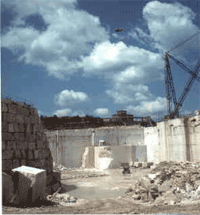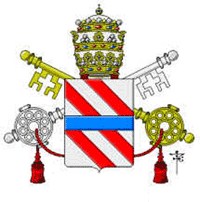Many men were injured and few died during the construction of the fountain. In 1734 a stone-cutter was crushed by a large block of travertine. in 1736 a mason fell from the roof and died. In 1740 an apprentice slipped on the Travertine and passed away after many head lesions.The fountain is mostly built of travertine stone. The name of this stone derives from the Latin adjective tiburtinus, which means from Tibur, the actula city of Tivoli, about 22 miles (35 kilometers) East of Rome.The stone is a mineral consisting of a massive usually layered calcium carbonate formed by deposition from spring waters or especially from hot springs.Travertine was often used as a building material. The largest building in the world constructed mostly of travertine is the Colosseum in Rome. Other notable buildings using travertine extensively include the Sacré-Cœur Basilica in Paris and the Getty Center in Los Angeles, California. The travertine used in the Getty Center construction was imported from the same querries in Tivoli that supplied the stone for the Trevi Fountain.The Papal Crest on the attic is also made of travertine. It does not show the different colors of the Corsini Family Coat of Arms. Therefore the stonecutters used crosshatching to symbolize the various paints. For the blue in the horizontal band they used horizontal crosshatching. They used a vertical crosshatching for the three red oblique stripes. The background does not have any crosshatching...meaning silver. The crosshatching method used here follows a very popular convention in helarldy.Click here for the next curiosities page |
Travertine quarries in Tivoli
Coat of Arms of the Corsini family
|
|---|


